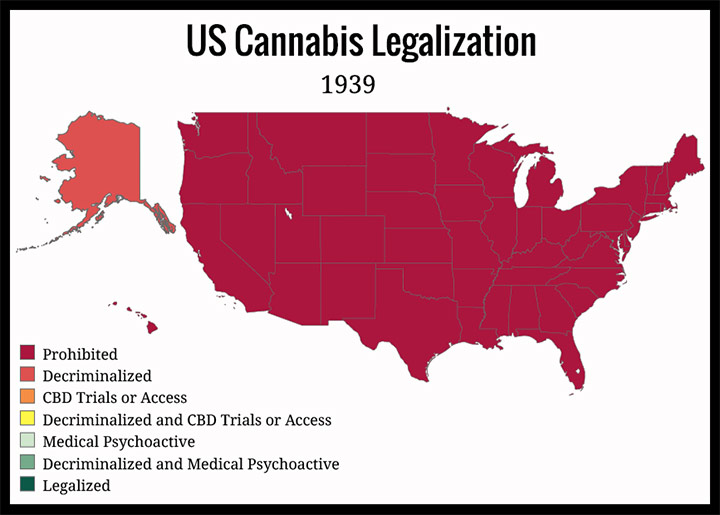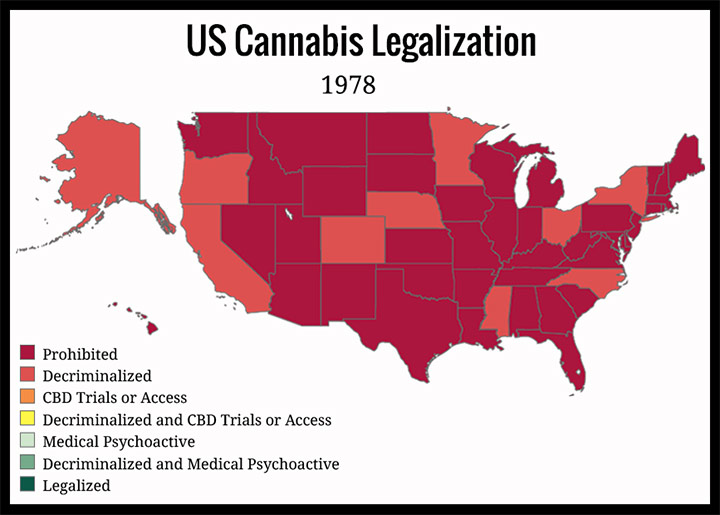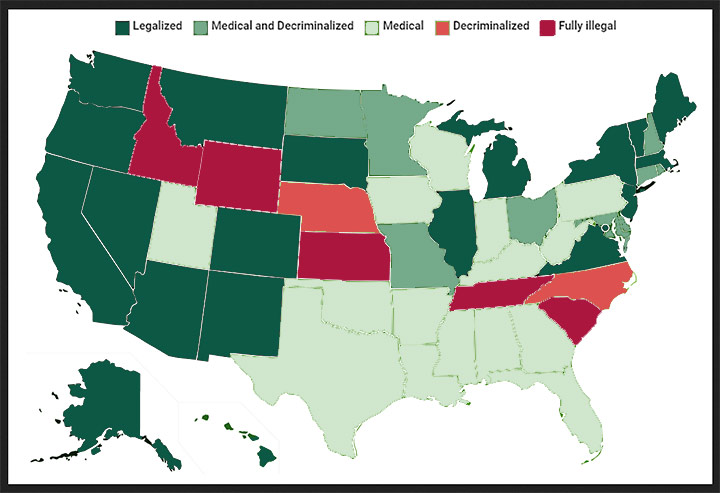I’m not ashamed to admit that I smoked marijuana… back when it was still illegal. And back when it took a whole joint to get a couple of people reasonably high.
The social scientists who rely on public opinion polls now claim that only one-in-ten Americans believe marijuana ought to be illegal.
Now that it’s legal — both medical and recreational — in Colorado and several other states, a cannabis industry is thriving… in certain places.
But not thriving like it used to?
Nor is the marijuana the same as it used to be.
There are ancient accounts of Scythians, Chinese, Japanese, and Persians using cannabis for various purposes, including medical treatments. And recreationally. Presumably, they didn’t know that THC was the primary psychoactive chemical in cannabis. (But they knew ‘killer weed’ when they smoked it, I assume.)
According to a study published in Biological Psychiatry in April 2016, researchers looked at changes in cannabis potency from 1995 to 2014, and found that marijuana had an average potency of about 4% THC in 1995. Cannabis finally hit the big time in 1996 when California became the first state to legalize the substance for medicinal use, after federal regulations had classified it, in 1970, as having ‘no medical value’. The next step, in many states, was to legalize recreational use.
Today, it is normal to find marijuana with THC content of over 20%, with some samples showing THC levels of over 30%. In 2017, High Times magazine wrote about Godfather OG, a strain with 34% THC content.
You would probably not want to smoke a whole joint.
If you are a cannabis fan, these higher THC levels might seem like a positive development. For certain people concerned about potential drug abuse — especially among children — higher THC content feels like a negative development.
Recent articles published by the U.S. Food & Drug Administration (FDA) suggest that the agency is most concerned about a different cannabis component: CBD; cannabidiol. CBD is not psychoactive, and has been touted as an effective medicine for certain ailments, in humans and animals. As I understand it, most CBD produced in the U.S. is extracted from hemp, a strain of cannabis that is not psychoactive. (Hemp and hemp-derived products have been legal on the federal level since the enactment of the 2018 Farm Bill. )
According to an article by Jacqueline Howard, Kevin Liptak and Alicia Wallace posted yesterday on CNN, a senior official at the U.S. Department of Health and Human Services has sent a letter to the Drug Enforcement Administration calling for easing restrictions on marijuana.
From that article:
A person familiar with the letter – written by Adm. Rachel Levine, the assistant secretary for health at HHS, to DEA Administrator Anne Milgram – confirmed to CNN on Wednesday that the recommendation contained within it is to reclassify as a Schedule III substance. Marijuana is currently classified as a Schedule I controlled substance, meant for the most dangerous substances, including heroin and LSD…
Separately, a DEA spokesperson confirmed to CNN in an emailed statement that the agency had received the HHS letter and is initiating its review.
If the Drug Enforcement Administration were to deem marijuana to be less dangerous than currently claimed, that might allow DEA agents to focus on a truly deadly drug: fentanyl. And on other deadly opioids and pharmaceuticals.
Here in Pagosa Springs, we have a handful of legal cannabis dispensaries. (Legal under Colorado law. Not yet legal under federal law.). As far as I know, for the past decade, the DEA has refrained from hassling any of our local licensed vendors and growers.
The licensed dispensaries here are much smaller operations than what you might find in Front Range cities like Denver and Boulder. But they’ve had a slight advantage, in terms of location… with Pagosa being just over the Colorado border from states where marijuana was still illegal.
But times change.
Here are some maps I found online. In 1939, marijuana possession became illegal under federal law across the U.S. (except in Alaska, which was still a territory). By 1978, a few states, including Colorado, had ‘decriminalized’ possession.
But at the beginning of the 21st century, scientific evidence was suggesting that marijuana had medical benefits, for pain relief and a few other chronic conditions, and certain states began to consider legalizing cannabis for medical treatments. Once medical marijuana was legalized, the next step was to legalize adult recreational use.
A non-essential product like recreational marijuana ought to be taxed in much the same way alcohol is taxed. Right?
By 2012, two states — Washington and Colorado — had fully legalized marijuana, and a few other states had legalized medical use.
Colorado, in particular, was surrounded by states where even medical marijuana use was still prohibited. You might say, we were “special”.
This put Colorado in an interesting situation. If cannabis were going to be legal for adult recreational use… then the government bureaucracy assembled to control medical marijuana needed to be greatly expanded to oversee this new industry, register the dispensaries, and to make sure the taxes are paid.
And taxes were, indeed, paid.
From an August 18, 2023 article by DJ Summers on KDVR,com:
Marijuana was officially the state’s most lucrative “vice tax” last year.
Marijuana legalization advocates leaned heavily on marijuana’s possibilities as a state revenue generator in order to gain support for statewide legalization. Nearly a decade later, their predictions have come true, according to an analysis of state tax data from the Colorado General Assembly Legislative Council Staff.
Colorado made more in tax revenue from marijuana in the 2022-23 fiscal year than from either alcohol or cigarettes and nearly as much as the two combined. The state collected $282.3 million in tax revenue from marijuana, nearly $50 million more than it collected from cigarettes and over $226 million more than it collected from alcohol.
But that’s not the whole story.
While Colorado was developing a thriving (and fairly expensive) cannabis industry, the surrounding states were changing their laws.
Here’s a map from 2022. Colorado doesn’t look so special any longer…
And the tax collections?
Not what they used to be?






